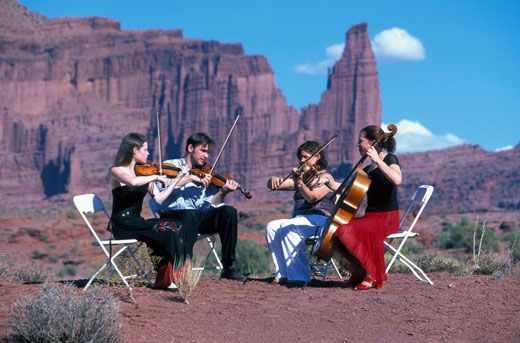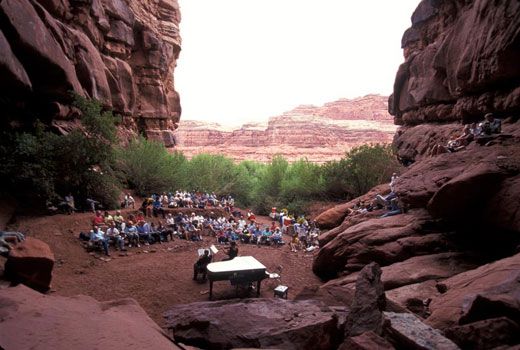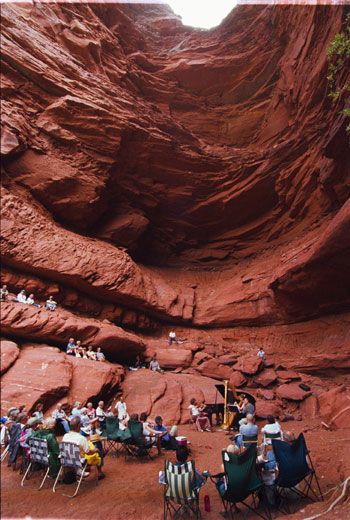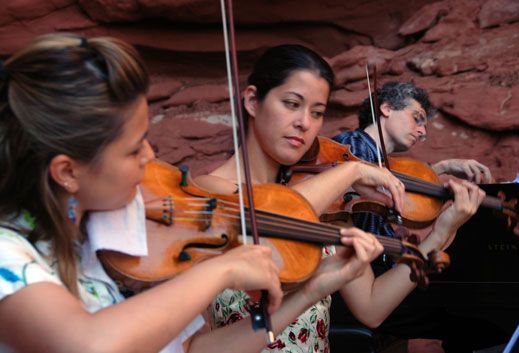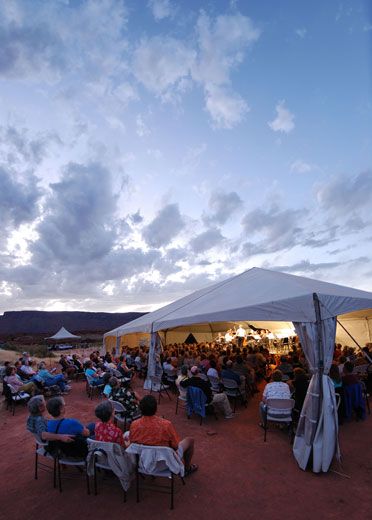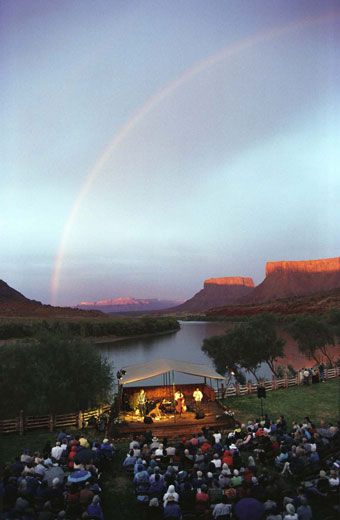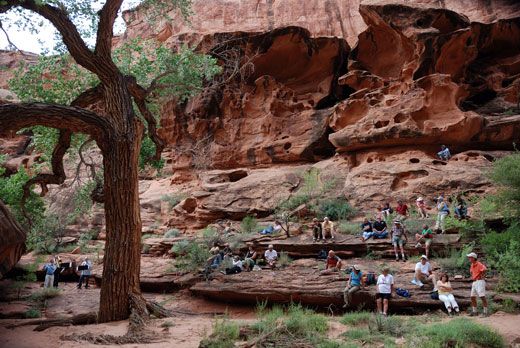At Moab, Music Among the Red Rocks
The Moab Music Festival features world-class music in an unparalleled natural setting
/https://tf-cmsv2-smithsonianmag-media.s3.amazonaws.com/filer/moabmusic_631.jpg)
With its stunning red rocks, the area around Moab is an adventurer's paradise, attracting hikers, bikers and river rafters to southeastern Utah. But when the summer heat tapers off around Labor Day, the region becomes an extraordinary concert hall for world-class musicians. The Moab Music Festival, now in its 16th year, holds a series of chamber music concerts, most of them outdoors amid the spectacular red rock landscape and along the Colorado River. This year's festival runs from August 28–September 13.
I've been lucky enough to attend 13 of the festivals since the event was organized in 1992 by artistic director Leslie Tomkins and Michael Barrett, a conducting protégé of my father Leonard Bernstein.
In the interest of full disclosure, Michael Barrett and I have collaborated over the years on several concerts for children and families, similar to my father's Young People's Concerts that were televised from 1958 through 1972. How I wish my father had lived to hear music in Moab's beautiful natural settings. Music lovers hear anew some of world's best classical music as it resonates off the rocks or finds acoustical purity in the dead silence of the remote settings.
My favorite Moab concerts are those set in a red rock grotto in Canyonlands National Park, accessible only by jet boating down the Colorado River. Getting there is a windy, gorgeous ride, snaking between the canyon walls that rear up on either side, a swath of deep blue sky above, and the striking formations dazzling concertgoers at every bend of the river. Thrilling! And the music hasn't even started yet.
The grotto is a natural amphitheatre with a sandy floor that accommodates camp and lawn chairs. If you want "box" seats, climb up to one of niches or ledges on the rock walls. Taking in the scene for the first time, one may wonder how in the world did that Steinway grand piano get here. River outfitters bring it down, snugly blanketed, at dawn on a jet boat. Eight men haul it up from the riverbank to the grotto, where they reattach its legs. Yet knowing that never seems to diminish my astonishment at the incongruity of the piano's presence. The enormous black instrument sits placidly in the red sand, like a tame stallion, awaiting the signal from its rider to unleash its magnificent strength.
I recall a two-piano performance of Stravinsky's "Rite of Spring," that was so intense that it seemed the very rocks themselves might crack. Toward the end of the first movement, Barrett's fierce playing caused his thumb to split open; blood smeared across the piano keys. During the quietest part of the second movement, a crow cawed in primal accompaniment. In a climactic section that ends in a great silence, we could hear Stravinsky's anguished chord yawning back at us from somewhere far across the river fully four seconds later. An acoustical marvel.
Classical chamber music is the mainstay of the festival, but it also serves up generous helpings of traditional folk, jazz, Latin music, and the works of living composers. This year's season includes William Bolcom and John Musto's brand-new comic chamber operas based on Italian folktales, tango-tinged jazz by Paquito d'Rivera, Scott Joplin piano rags and works by the versatile American composer Derek Bermel, plus chamber works by the likes of Bach, Beethoven and Brahms.
Founding a musical festival in Moab was "a total gamble," says Barrett. Driving through the tiny town in the early '90s he had been captivated by the "breathtaking landscape, the open spaces and the remoteness." The town, in an economic downturn at the time after losing its mining industry, was posed for something new. The festival remains a nonprofit "labor of love," he says, but over the years it has tripled its musical events and some 2,500 people attend annually. "It combines the best that humanity has to offer with the best nature has to offer," he says.
